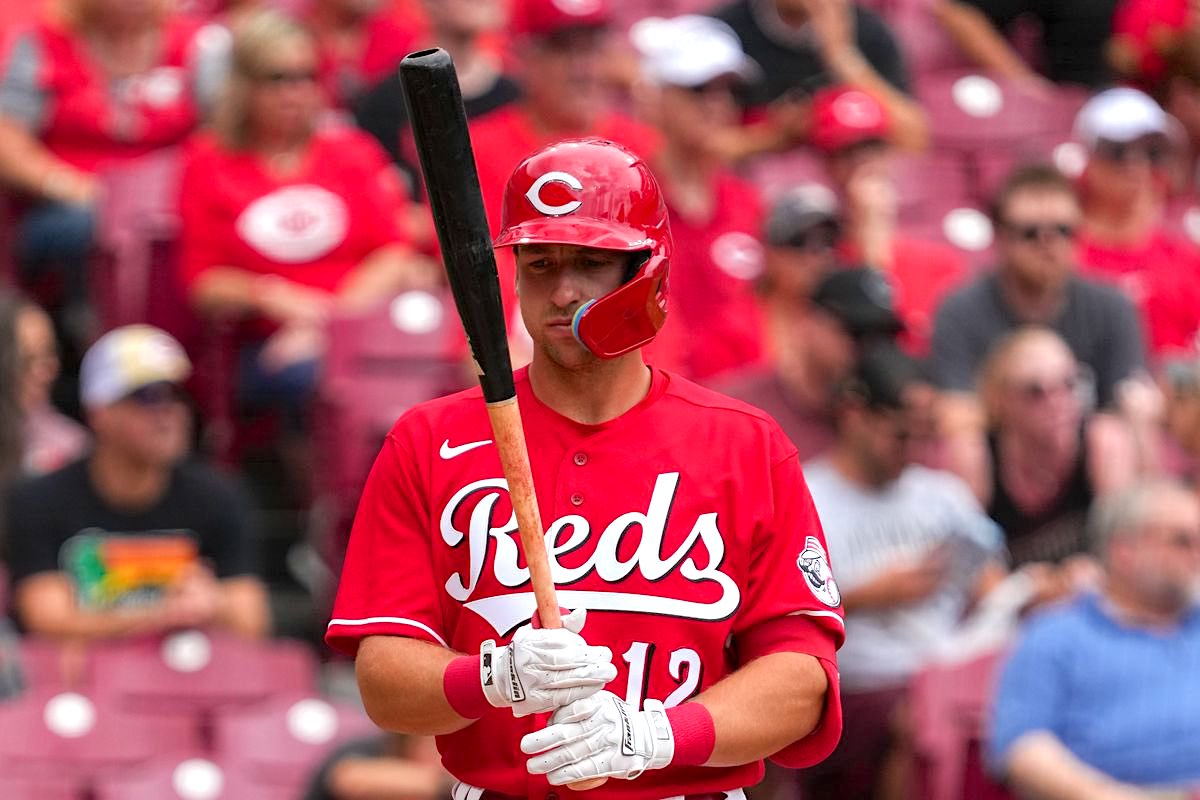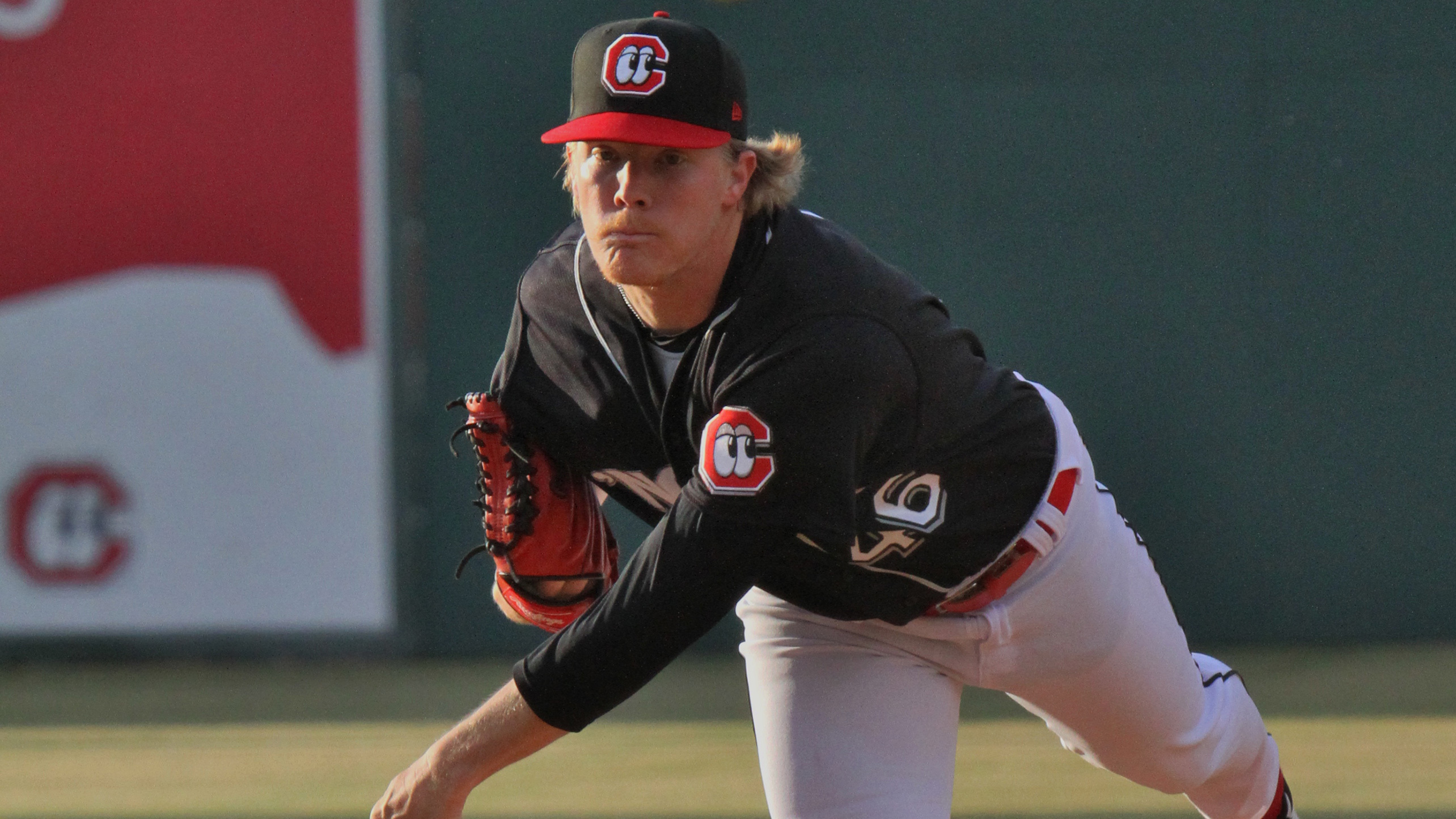
Welcome to Red Monday, a place where Reds fans can start their week and find clear-eyed analysis of how the team is doing and where it’s headed.

The Week That Was
The Reds were 2-5 last week and now 6-9 overall. They are in last place in the NL Central a half-game behind the St. Louis Cardinals.
Atlanta swept David Bell’s club in three one-run games at Truist Park.
- Monday The bullpen wasted a strong starting performance by Graham Ashcraft and a late comeback in the 5-4 10-inning loss. Stuart Fairchild and Jonathan India had big hits late in the game. Derek Law gave up a two-run walk-off homer on his first pitch.
- Tuesday The Reds jumped out to a 4-1 lead but Luis Cessa couldn’t protect it. The relievers who followed didn’t help in the 7-6 loss. Spencer Steer and Jose Barrero had big games for the offense.
- Wednesday After six innings of Hunter Greene, the Reds led 4-3, but Ian Gibaut and Buck Farmer each gave up a run in a 5-4 loss in the series finale.
The Reds split a four-game series at home against the Phillies.
- Thursday A 6-2 win as Nick Lodolo and the bullpen held the Philly offense to two runs. The offense scored largely on singles. Wil Myers with a key two-run hit.
- Friday In what might have been Connor Overton’s last start, the Reds got behind early and lost 8-3.
- Saturday Wil Myers (two HR) and Graham Ashcraft (six shutout IP) led a fun 13-0 romp.
- Sunday The Phillies repaid the blowout favor, scoring nine first-inning runs off Luis Cessa.
Steering the Right Direction
In his first 15 games in 2023 Spencer Steer is batting .320/.424/.520. That’s good for a wRC+ of 148 — or 48 percent better than the league average. By that measure, he’s been the best hitter on the team.
It’s too early for those stats to have predictive value. They tell us where we’ve been, not where we’re going. Given that caveat and our impatience, what can we say about Steer’s fast start?
If you remember, Steer got called up last September and played 28 games for the Reds. He had been drafted by the Minnesota Twins in the third round in 2019 out of the University of Oregon. So Steer had been in the Twins minor league system for three years before being traded to the Reds for Tyler Mahle last August.
Comparing the 108 plate appearances last fall to the 59 so far this year it’s clear Steer has hit better in 2023:
- xwOBA up from .281 to .352
- Average exit velocity up from 84.7 mph to 89.2 mph
- Strikeout rate down from 24% to 14%
- Walk rate up from 10% to 15%
- Chase rate down from 25% to 15%
- Whiff rate down from 21% to 15%
I chose those stats [through Saturday] because none depend on batted-ball luck. Much of Steer’s improvement has come against breaking balls. His xwOBA has taken a massive jump from .264 to .356. He’s doing better against fastballs, too. This 438-foot blast in Philly was on a curveball.
There’s much encouraging news about Spencer Steer’s early performance. But his top line stats and that 148 wRC+ have been inflated a bit by good fortune. Steer’s batting average (.320) is ninety points over his expected batting average (.232). Same goes for the 70-point gap between his wOBA (.422) and xwOBA (.352).
Let’s be clear. An xwOBA of .352 is outstanding. It’s in the top third of the major leagues. And those fundamentals — strikeout, walk, chase and whiff rates — are in the league’s top 20%. That chase rate of 15% is in the top 1% of MLB. None of that is luck on balls in play.
As for the rest of his game, Steer has a sprint speed of 27.7 feet/second, which is only behind TJ Friedl on the Reds. It’s in the top quarter of the league. His defense at third is a work in progress although showing signs of improvement. In the minors, Steer didn’t focus on third. While it was the position he played the most (80 starts), he spent a lot of time at second (68 starts), short (38 starts) and even a couple games at first. His confidence fielding seems to be improving and he’s made a few spectacular plays on balls down the line.
STEER clear of third base!
Spencer Steer with an amazing play to end the inning! #Reds pic.twitter.com/nFe2iwOynG
— Bally Sports Cincinnati (@BallySportsCIN) April 13, 2023
Steer left the game yesterday in the 9th inning. It was reported he jammed his knee/quad sliding into second base in the 8th inning and landed on it fielding a ground ball in the 9th. X-rays were negative. An IL stint is unlikely. We’ll see how he feels later today.
Bottom line:
- It’s too early to have bottom lines about Steer’s future
- Spencer Steer has hit considerably better in 2023 than he did in 2022
- A few of his public-facing stats are inflated by good luck on balls in play
Early Exit Velocities
I hope you read Kyle’s post on Friday that included a discussion of stabilization rates for various baseball statistics. A stat “stabilizes” when it becomes more an indicator of a player’s true talent (signal) than of random variation (noise). As Kyle points out, stats never truly stabilize in the sense that players themselves don’t remain constant. An injury might affect performance short- or long-term. A batter might not respond well to an adjustment made by opposing pitchers. Or a hitter may get better or worse as time goes on, even within a single season.
Of the rates listed, exit velocity (EV) is one that stabilizes early — at 16 games. If you combine that finding with the research on the importance of a high EV for success at the plate, it makes a look at the Reds hitters’ early EV valuable. They play their 16th game today.
Exit velocity is the speed of the ball as it comes off a bat. Other qualities of a batted ball matter also, like launch angle and spin rate. While hard-hit balls won’t always fall in for a hit, they give the defense less time to react. In particular, power hitting has been shown to correlate strongly with average exit velocity on fly balls and line drives.
Average MLB exit velocity has varied from 88-88.5 mph over the past several seasons. Here are 2023 EV numbers for Reds players who have at least 20 plate appearances [through Saturday], excluding bunts:
ABOVE AVERAGE (>89 mph)
- Stuart Fairchild (90.8)
- Wil Myers (90.4)
- Tyler Stephenson (89.6)
- Jonathan India (89.5)
- Spencer Steer (89.2)
- Jose Barrero (89.1)
BELOW AVERAGE (<88 mph)
- Will Benson (87.5)
- Jason Vosler (87.4)
- Jake Fraley (86.2)
- Kevin Newman (85.0)
- TJ Friedl (84.6)
Exit velocity isn’t the last word in predicting hitting success. Slap hitters (low EV) can put up high walk rates and lower strikeout numbers because they aren’t swinging the bat as hard and can wait longer to see the pitch. But power is almost always an important factor in a hitter producing runs and power is strongly correlated with average EV.
Seventy-One Point Four
Andrew Abbott has faced 35 batters. He’s struck out 25. When you divide 25 by 35 you get 71.4.

Photo: MLB Pipeline
That’s Andrew Abbott, left-handed starter for the Double-A Chattanooga Lookouts. In his first two games of the 2023 season, Abbott has struck out 71% of the batters who have come to bat against him. Abbott has thrown 162 pitches and batters have swung and missed 43 of them. He’s allowed two hits and one walk. While it’s only two games, that 2.9% walk-rate offers early evidence Abbott may have put command problems behind him.
Abbott was a second round pick for the Reds two years ago in 2021. He had pitched at the University of Virginia primarily as a reliever until his senior year. While in Charlottesville, he struck out 327 batters in 215 innings (36% K-rate) and was a consensus All-American.
The 24-year-old Abbott is rocketing through the Reds minor league system. He started 20 games for the Lookouts last year after 4 starts for the Dayton Dragons for a total of 118 innings. It’s hard to imagine Abbott won’t be promoted to Triple-A soon. He sports a streak of 27 shutout innings in a row. What more does he have to prove at Double-A?
As for portfolio, Abbott throws a 93-94 mph four-seam fastball and a 82-83 mph sweeper slider as his primary pitches. He also works in a traditional curve and changeup.
Meet Casey Legumina
On Saturday, the Reds called up right-handed pitcher Casey Legumina to fill the roster spot vacated by Connor Overton. Overton, who through three starts had an xERA of 4.93 and xFIP of 5.89, was sent to the IL for right elbow strain.
Legumina (25) came to the Reds from Minnesota this offseason in exchange for Kyle Farmer and his salary. Legumina was a Twins’ 8th round draft pick in 2021 and not one of the organization’s top-40 prospects. He is not ranked in the MLB Pipeline Reds’ Top 30.
Legumina pitched as a starter and reliever in the Twins farm system. He’d made it to the Double-A level where he pitched 73 innings and posted an ERA of 4.93 and xFIP of 5.09. Legumina has appeared in four games for the Triple-A Louisville Bats this year, all in relief. In 5.2 innings, he has five strikeouts while giving up no walks and six hits. His ground ball rates have been all over the place in the minors, so it’s hard to say what kind of a pitcher he is in that regard.
In terms of pitch portfolio, Legumina throws a 95-mph fastball, an 80-mph “sweeper,” an 85-mph slider and an 87-mph changeup. His 91 pitches have induced 14 whiffs.
Legumina threw two innings of mop up work against the Phillies on Saturday to complete the 13-0 romp. He gave up a walk, a hit and struck out three. Legumina’s spin rates were hundreds of rpm below what Statcast had shown for his minor league appearances. That’s one small sample size in conflict with another small sample size. Time will tell.
ALSO: David Bell said that Luke Weaver would take Overton’s spot in the rotation. Matt Wilkes wrote a post on Weaver’s prospects during the offseason.
In Case You Missed It
This Noelvi Marte home run for the Double-A Chattanooga Lookouts was part of a good string of games for the Reds infielder.
Incoming
- Three-game home series vs. Tampa Bay (6:40, 6:40, 12:35)
- Four-game road series in Pittsburgh (6:35, 6:35, 6:35, 1:35)
[Image: Reds Twitter]


